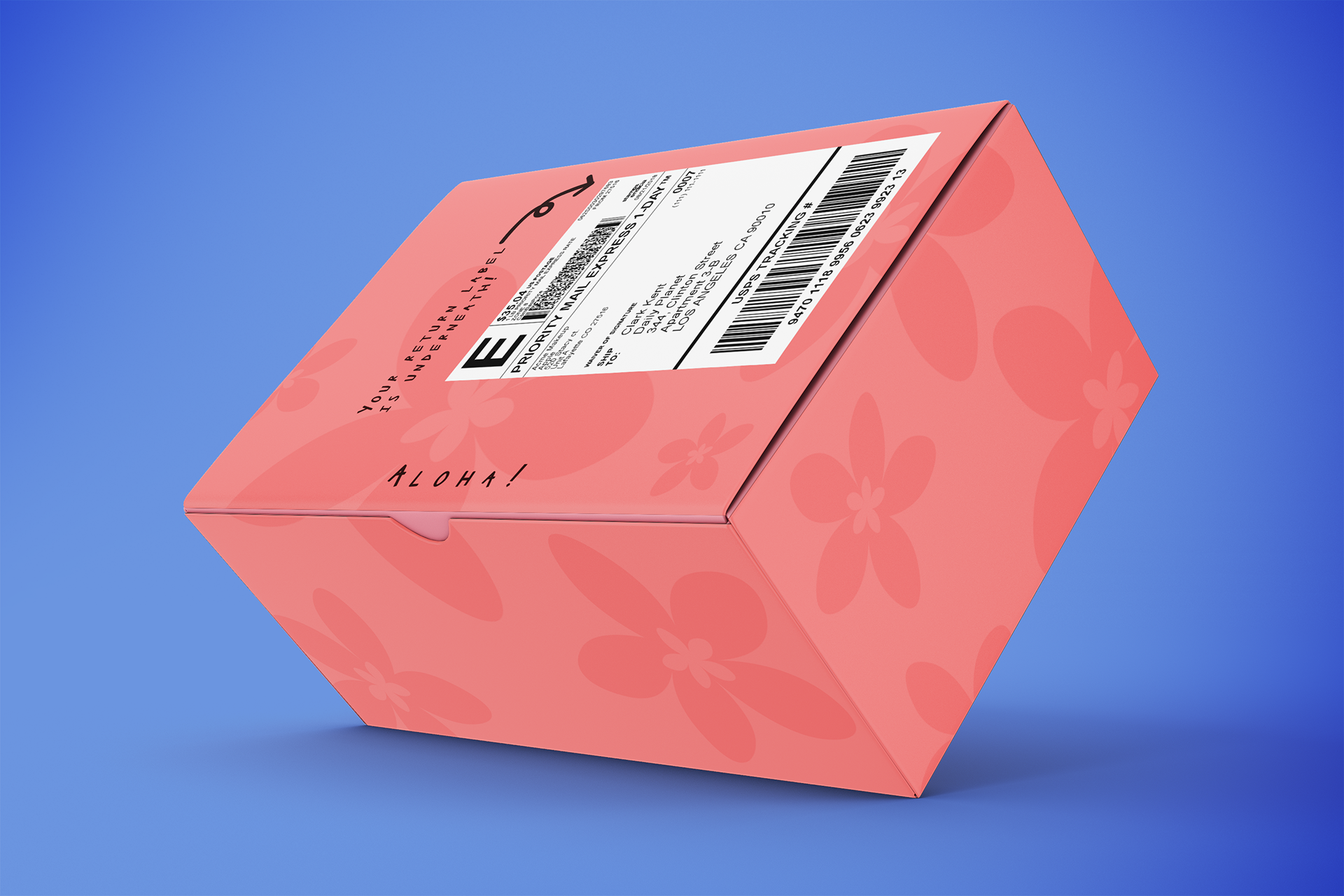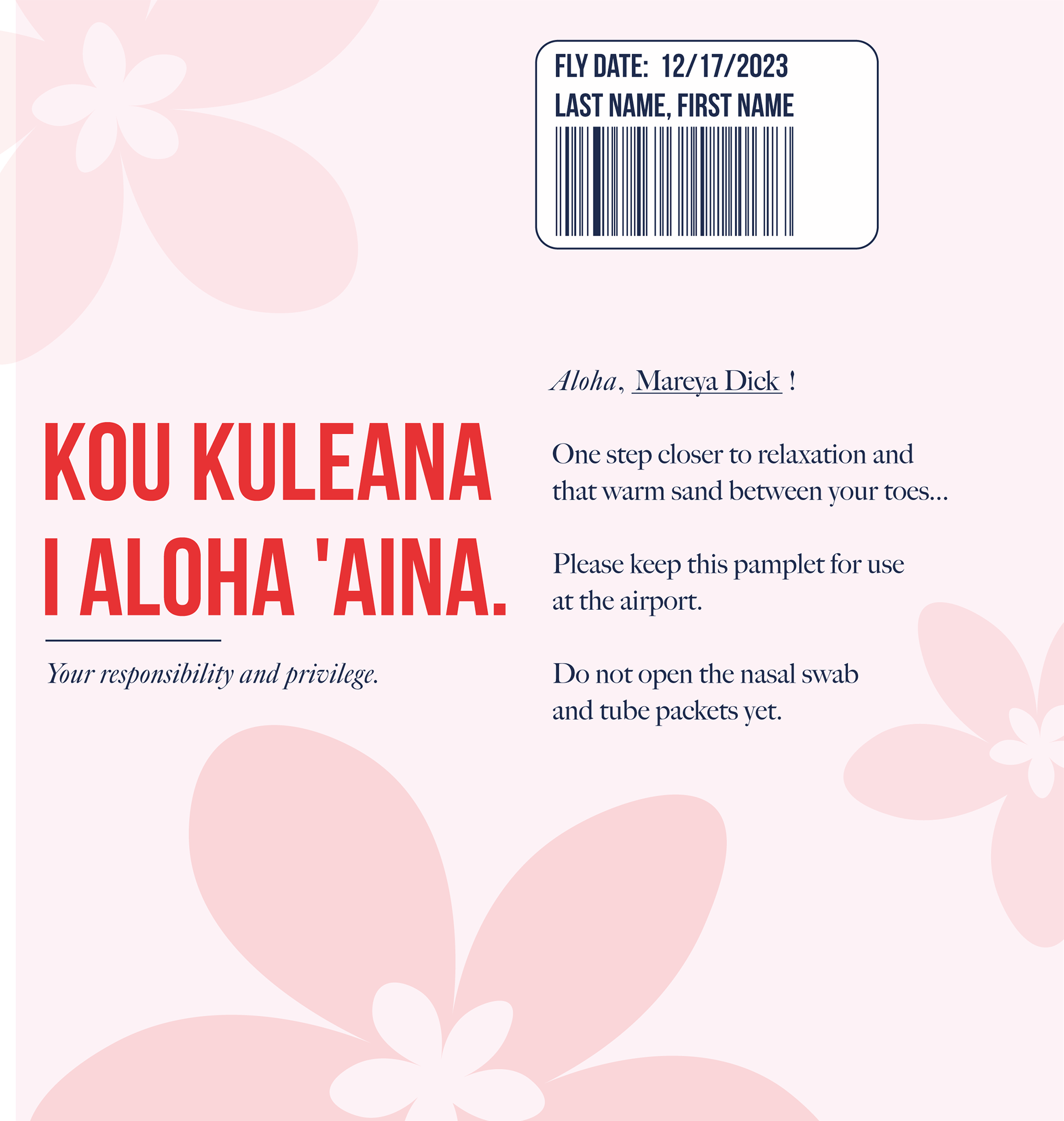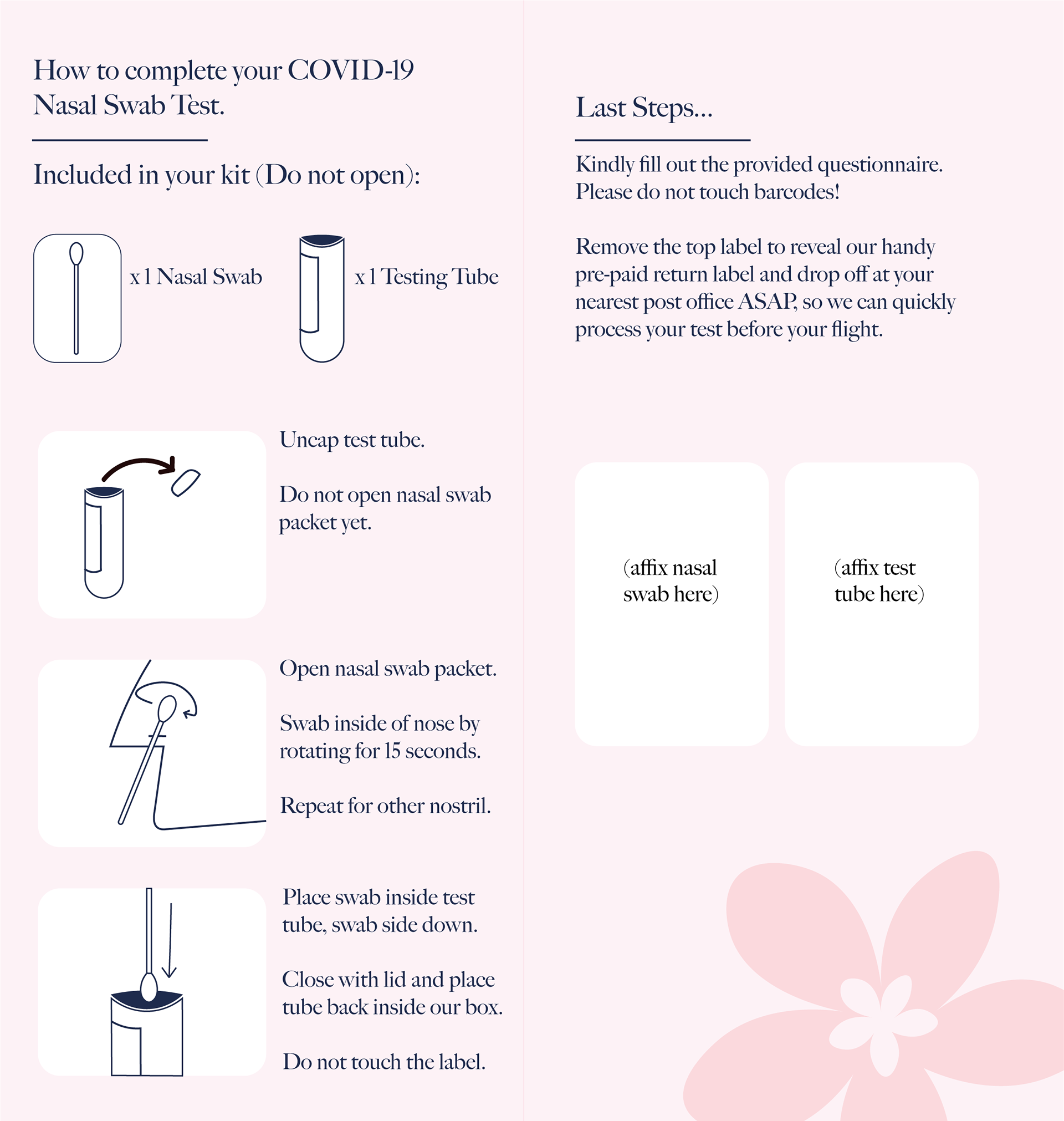In Fall 2021, I took Experience Design I with Professor Chornyak and over the course of a semester, we were asked to find a problem, ask questions, and create a solution. This course took place after classes for Northeastern resumed to a hybrid-learning platform, and a year or so after serious quarantine restrictions started in my home state, Hawaii.
The semester projects began with making videos as means of introduction-- I made a vlog-style video out of footage I filmed while at home during quarantine, and "toured" the class from the shores of the island to inside Halemaumau Crater. In this way, I started focusing on tourism, specifically in Hawaii, and what ways respectful tourism could be encouraged.
I began to create a board of different ways respect for the land, and its people, could come across in physical, mental, and legislative ways. I ultimately chose to focus on a major vein of tourism-- air travel, and COVID-19 testing for air travel. I interviewed multiple people who relayed major frustration with how the State of Hawaii handled testing (see "The Stressful Reality"), and how confusing its requirements were, how long it took to be tested after disembarking the aircraft, and frustration with tourists asking why they needed to be tested, feeling it was "unnecessary".
(Click pictures to enlarge them)
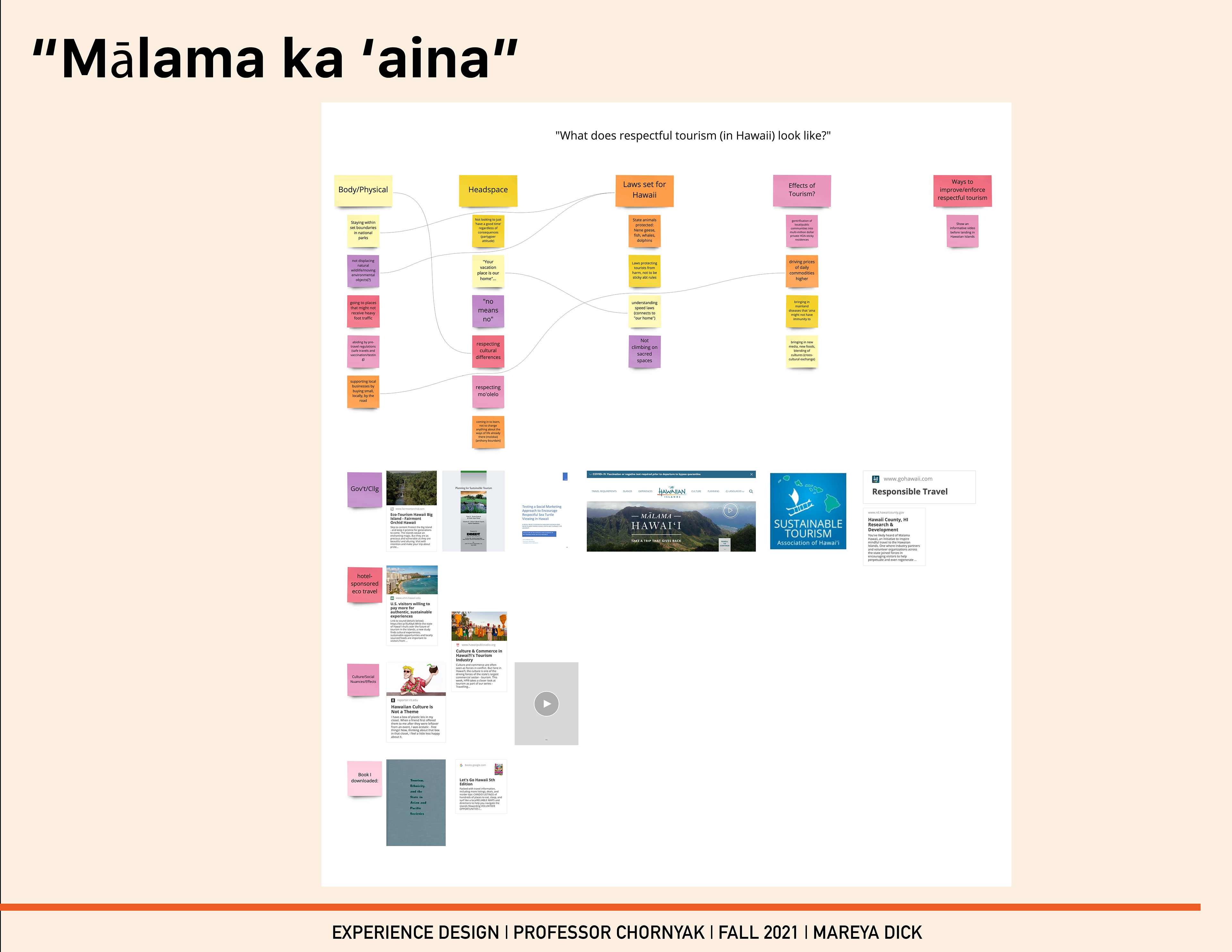
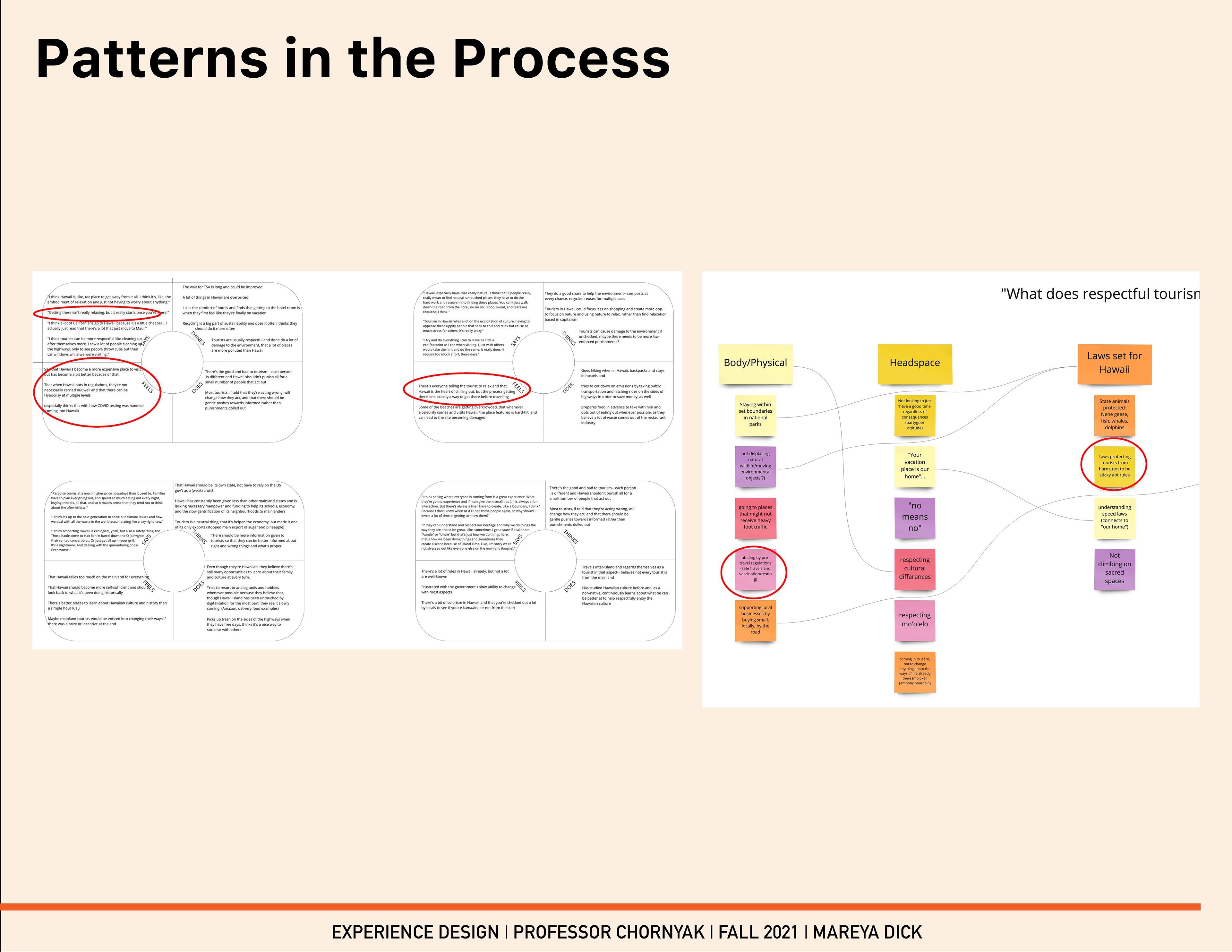
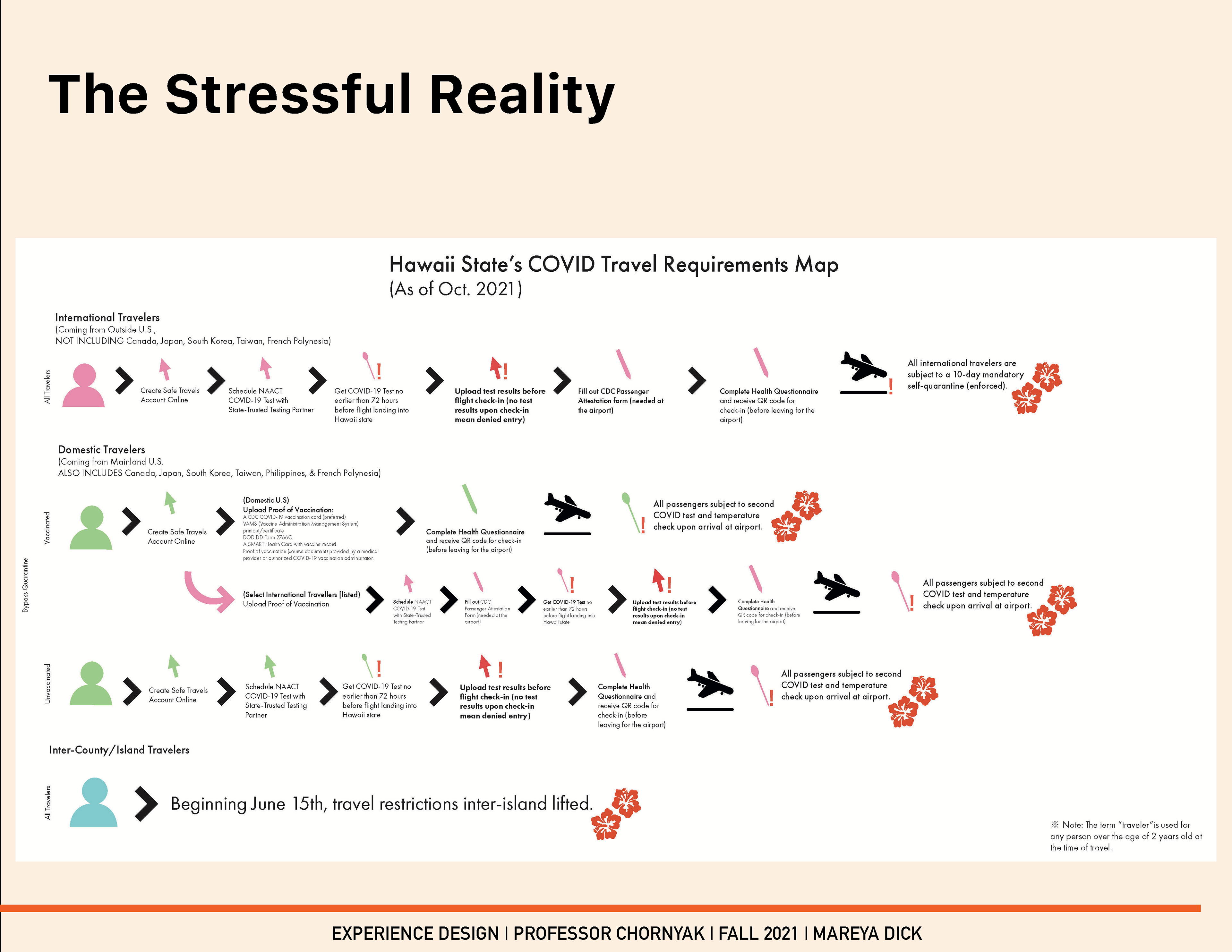
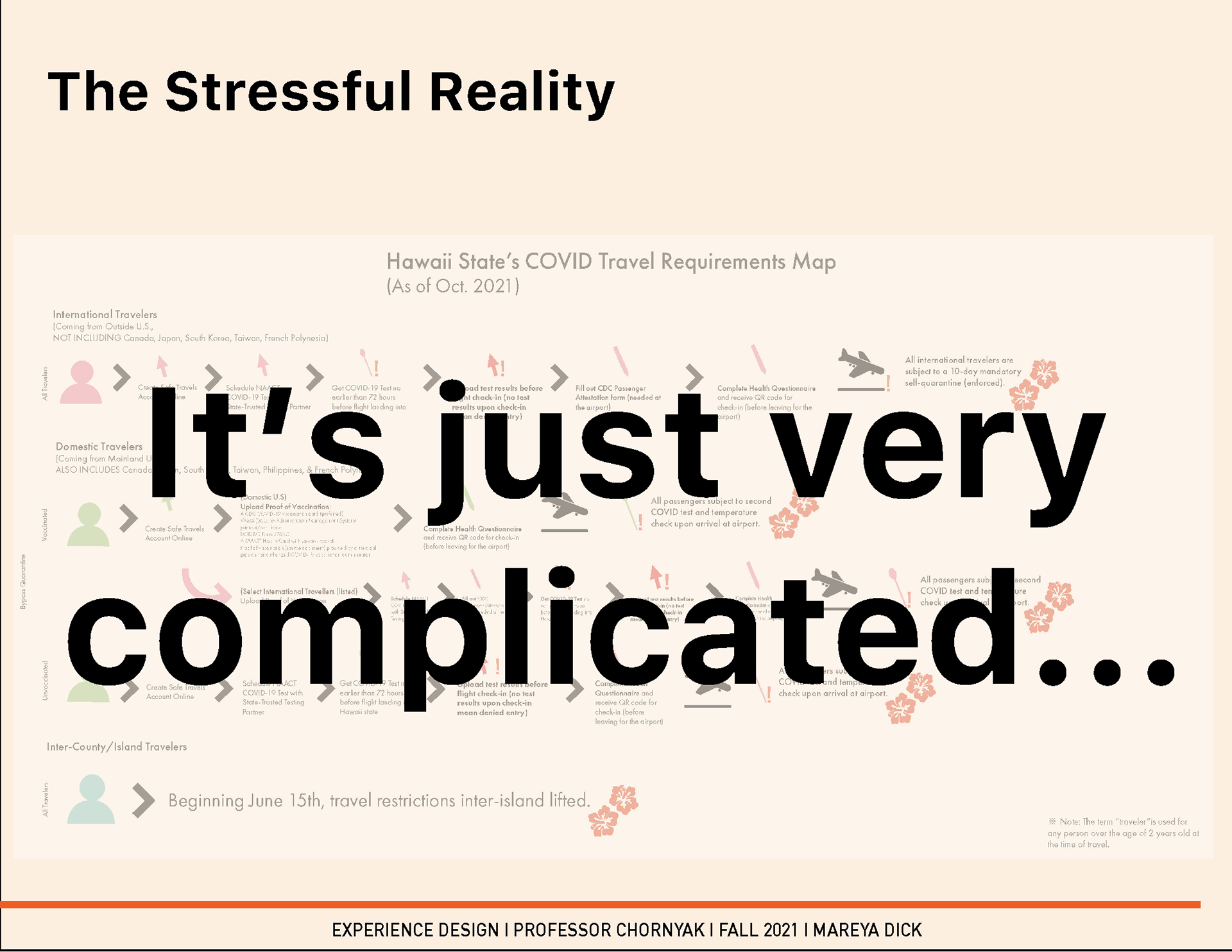
Hawaii's native community is like an 'Ohi'a Lehua blossom, pictured below. Native Hawaiians, and indigenous peoples around the globe have time and time again been subjugated to Colonial Epidemic Diseases brought from far away.
There would have been no easy way to regulate and quarantine inbound passengers coming into the Hawaiian Kingdom in the 1770s. But since then, modern technology has been developed, postal services have become more fast-paced, and travel has been regulated. All strong developments that could help defend against COVID-19's spread, and keep the kama'aina, or local community, healthy.
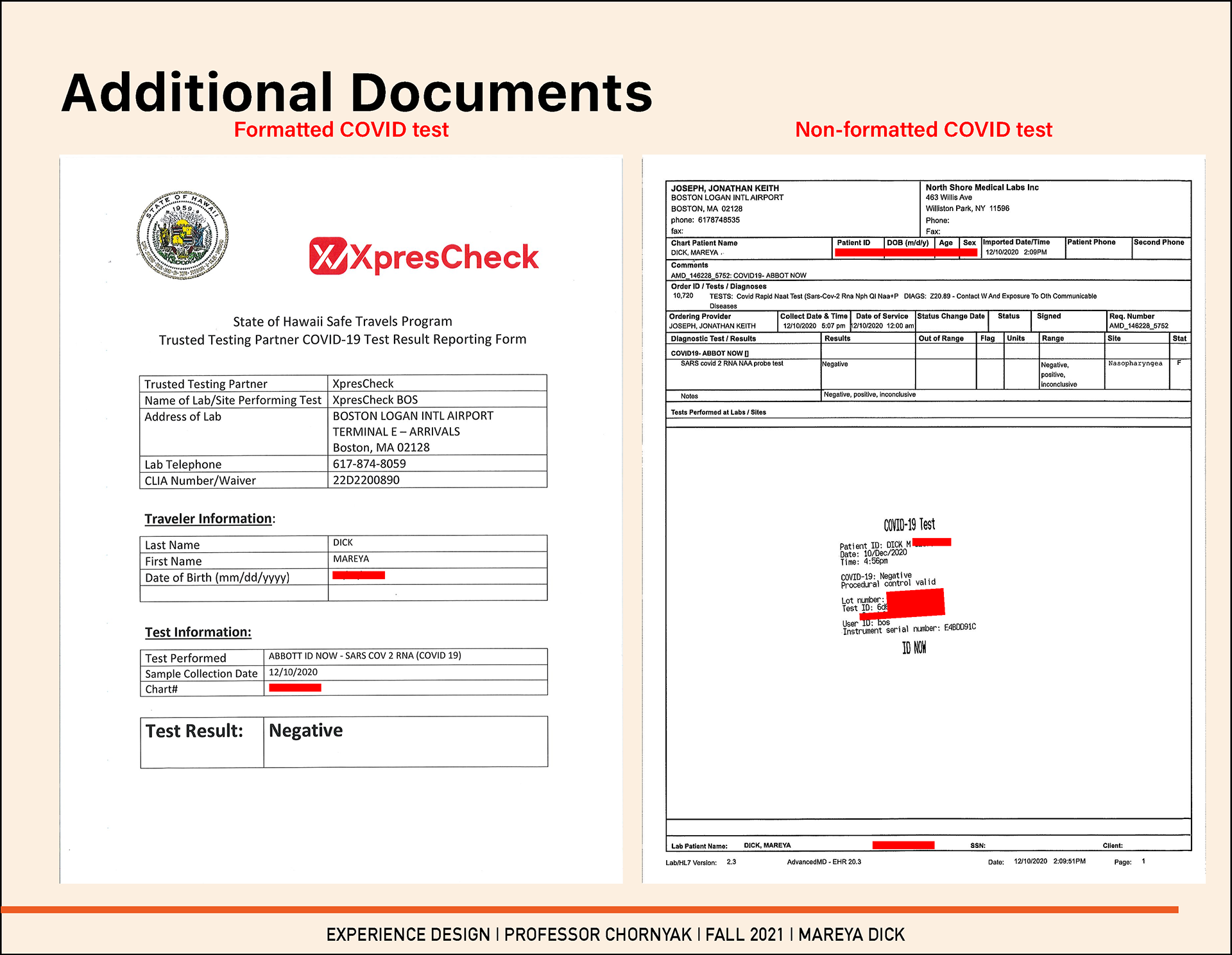
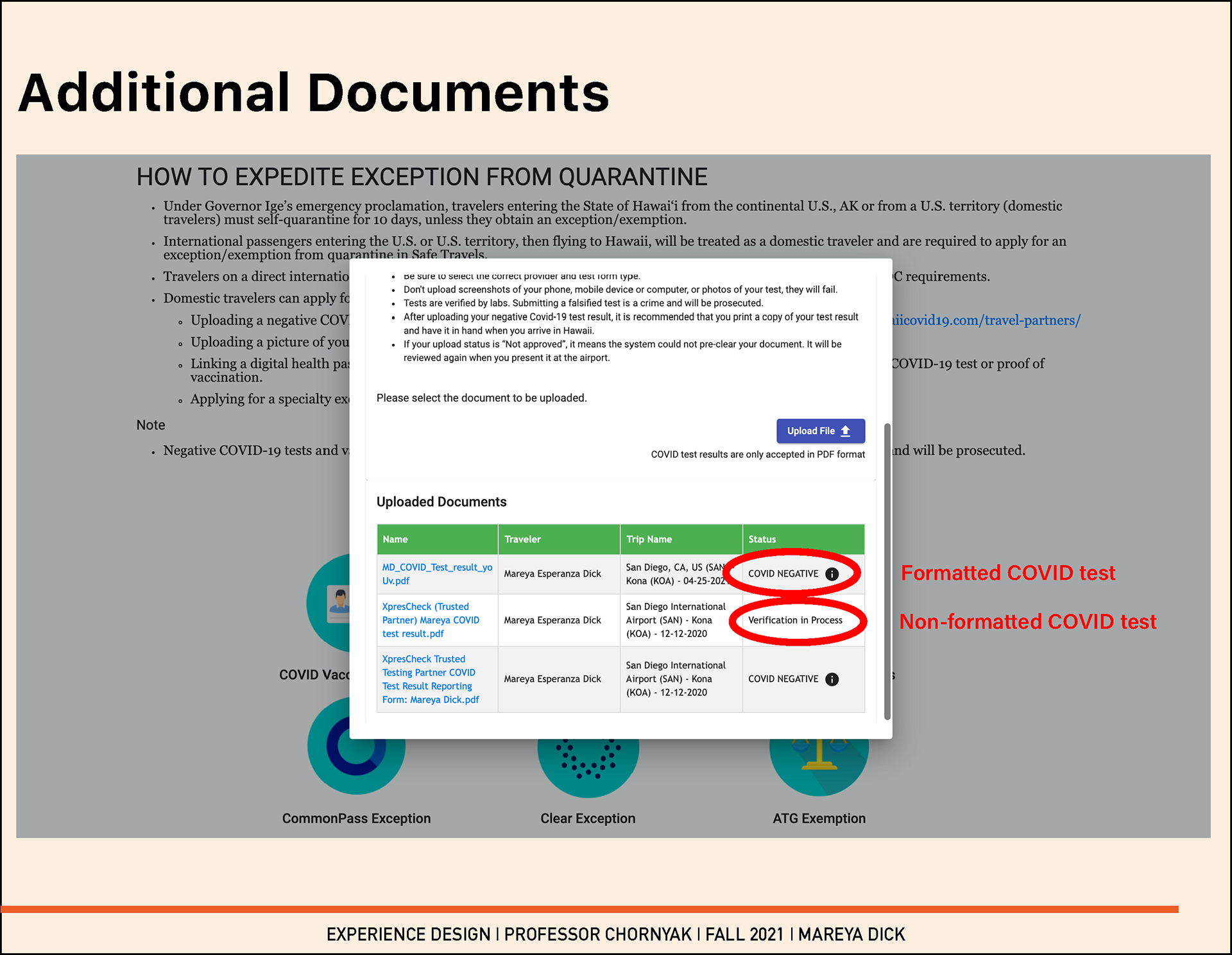
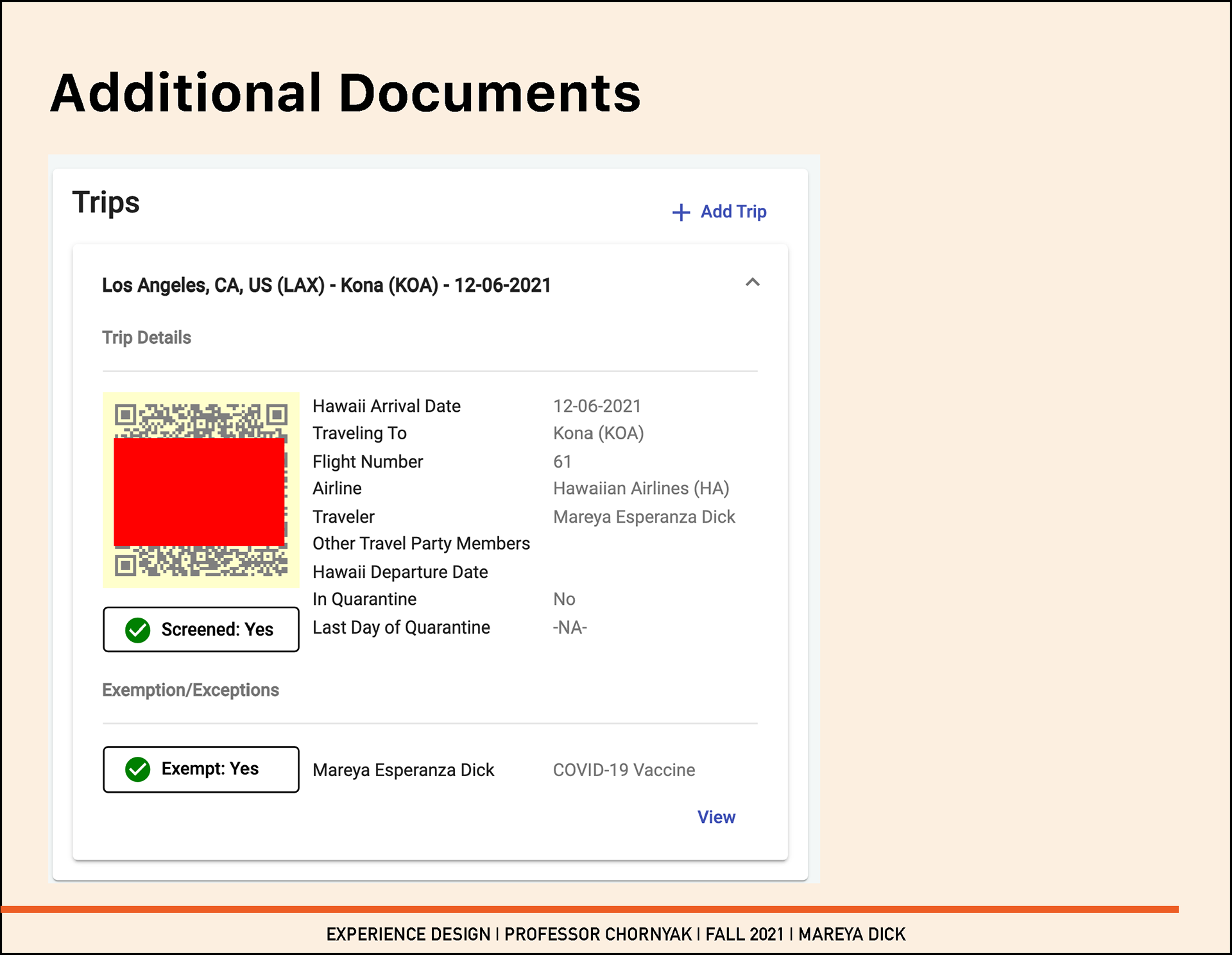
My personal experience with the State's travel requirements coming back home had been rough. I had to book a hotel room (an additional expense) to get tested at Boston Logan Int'l Airport the night before my flight because the only State-approved testing sites were there, and nowhere near my apartment in Roxbury, and an Uber there and back would have also been costly. Once I had gotten tested (a ~$200 test), I found that the provider didn't send back the results on the State's required form, pictured in the middle, above with the Hawaii State Seal (though I had selected its necessity when booking). I had to ask the hotel to scan and send my physical results so that I could edit and send everything in so that I could be exempted from quarantine.
A lot, right? --And I still had to look forward to a second test upon arrival back home, where it took around 40 minutes after landing to get tested.
I had to do this process for myself, and later had to help navigate and edit travel documents for my parents, their friends, neighbors, and relatives. It was hard for me to navigate, as a 20-something year-old, but even more mystifying for Kupuna (older adults) to attempt to navigate.
I knew that this testing was necessary and important.
But something needed to change.

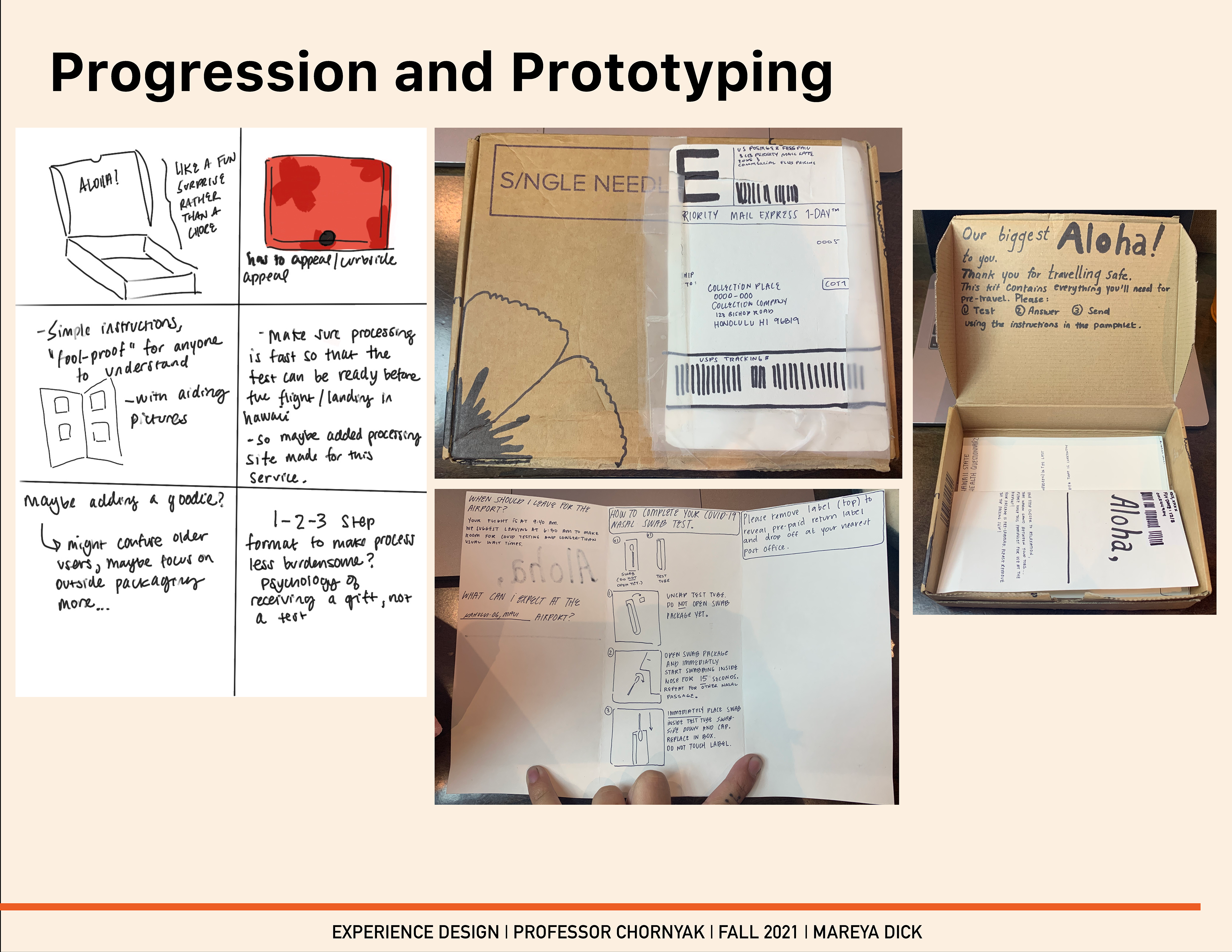
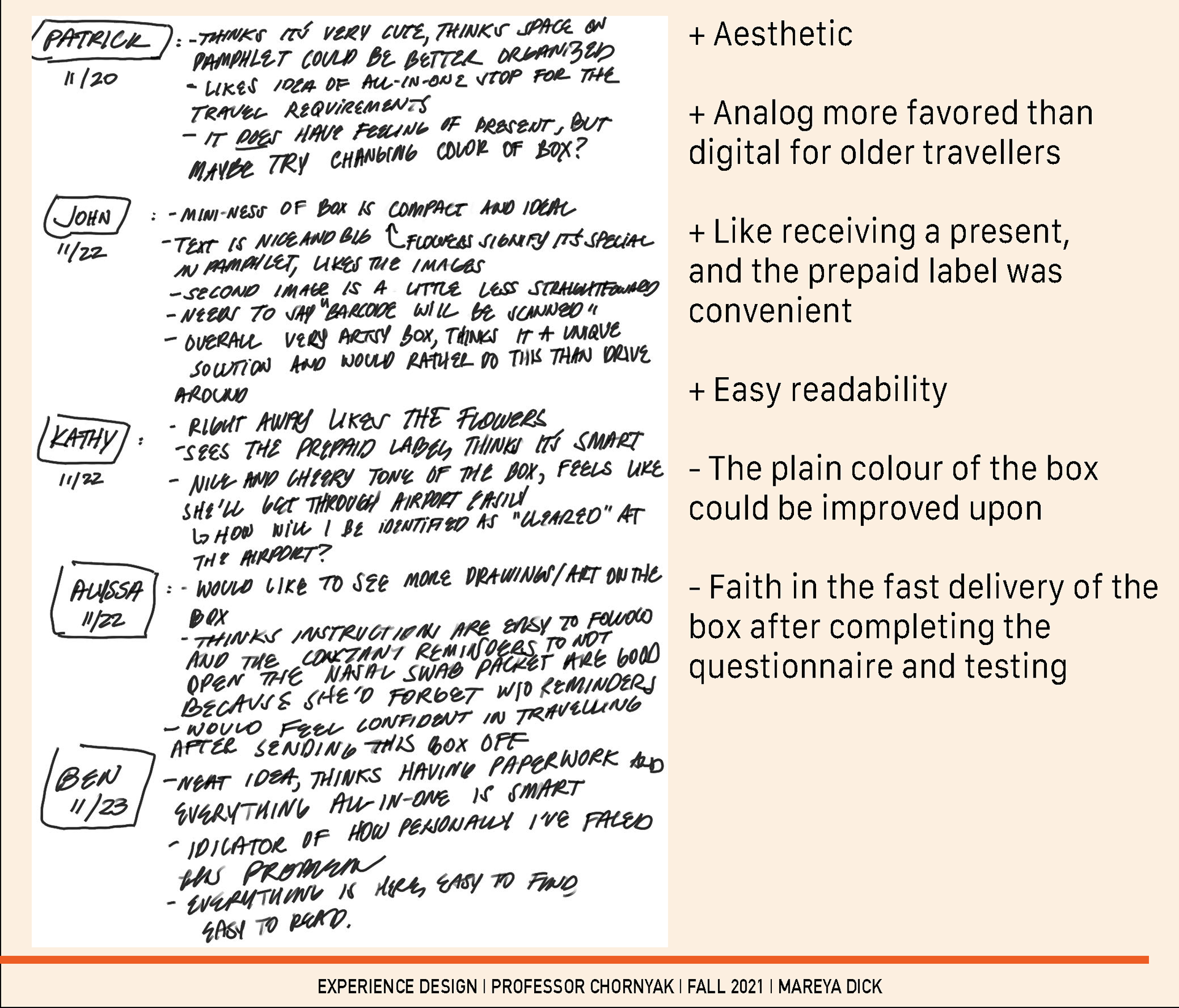
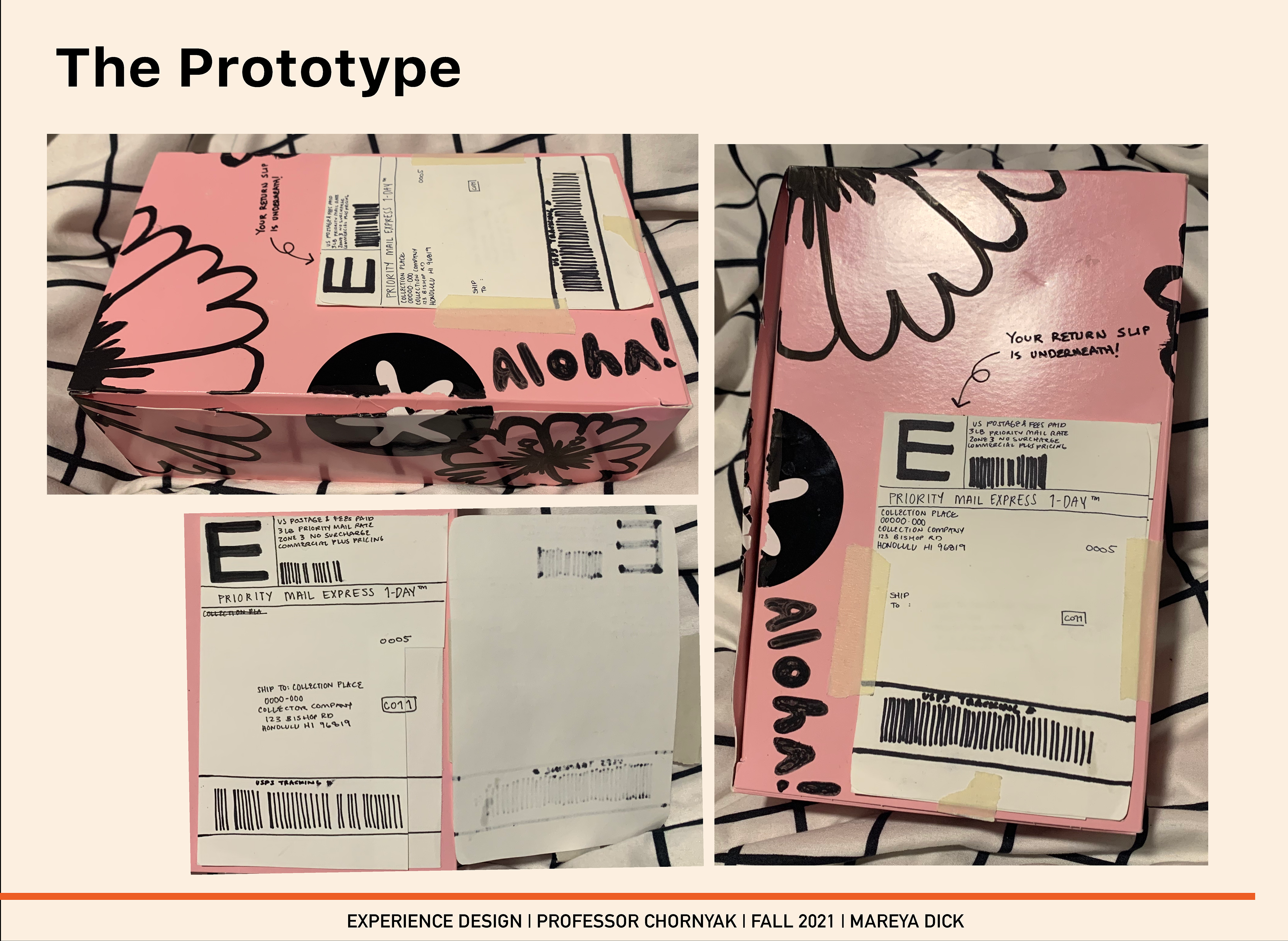
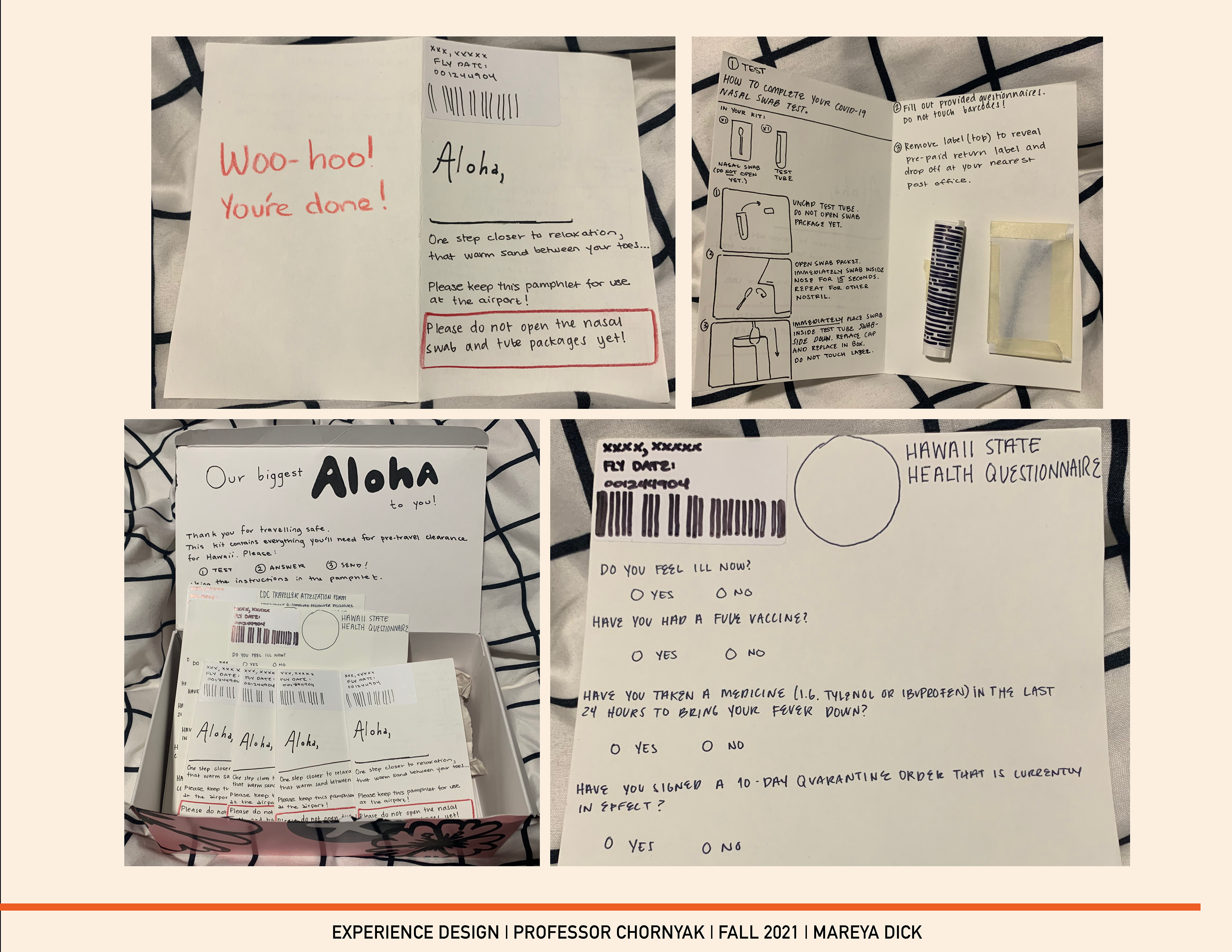
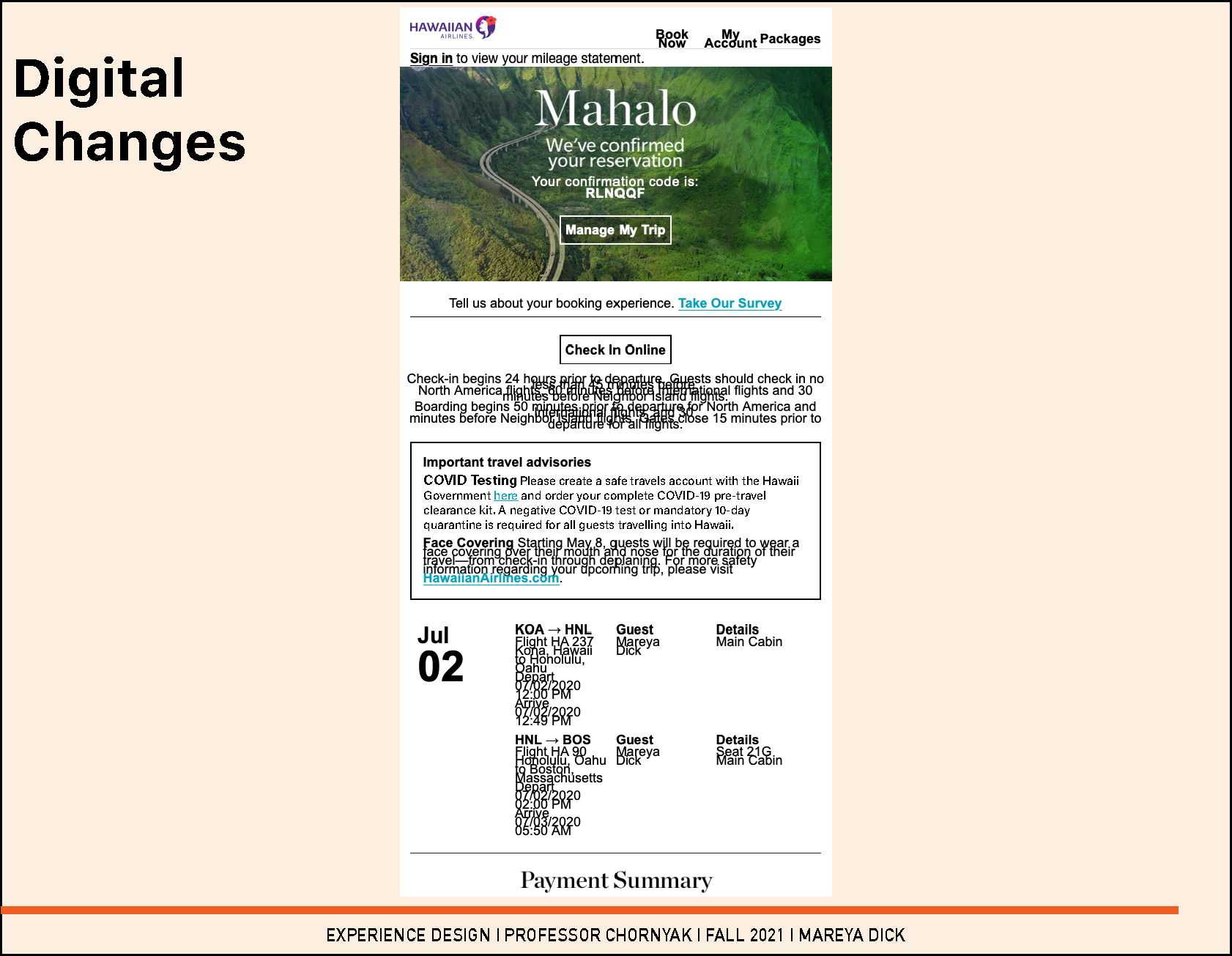
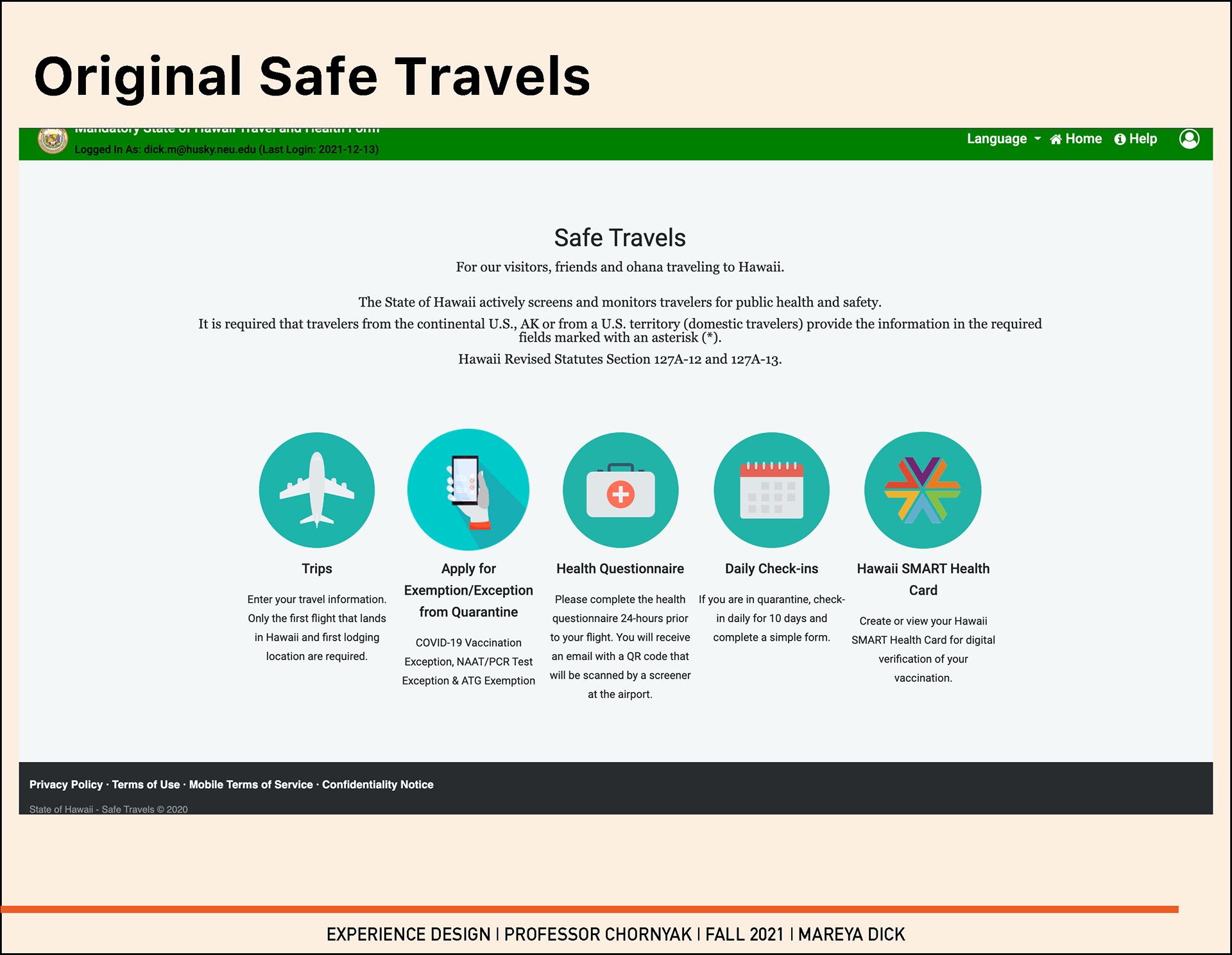
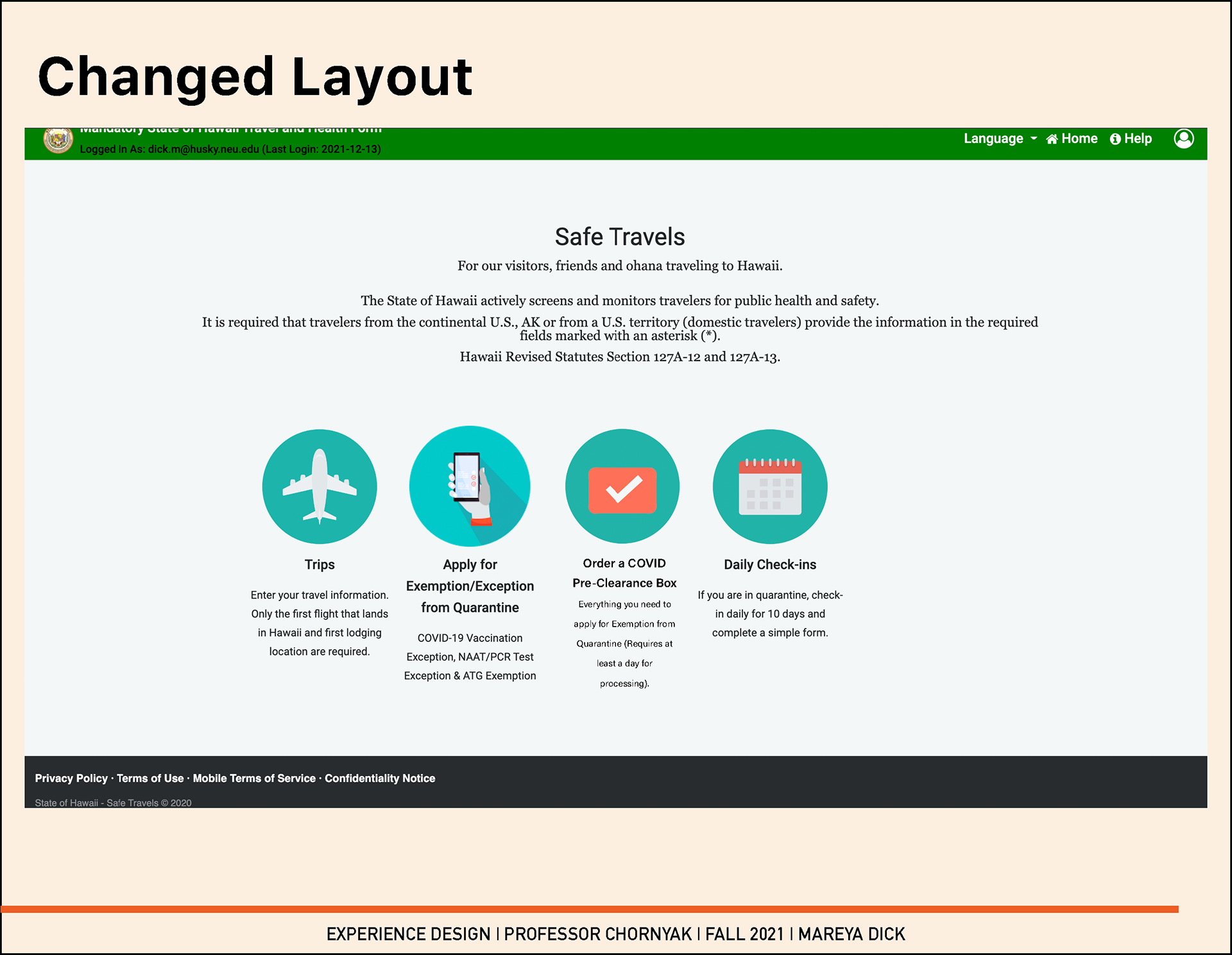
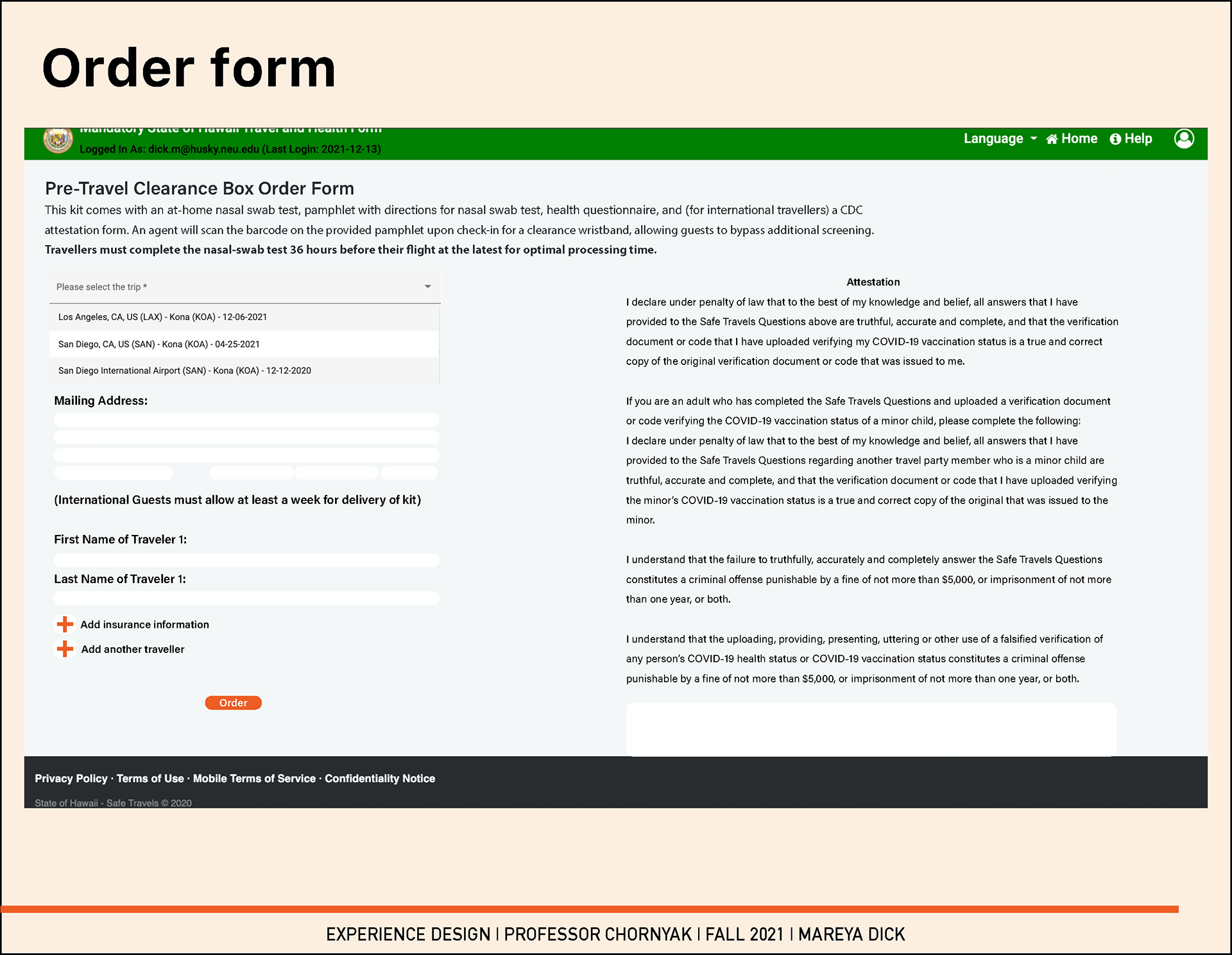
My solution to this problem was a testing travel box, which would have a COVID-19 Rapid testing kit to be used and sent back with quick turnaround (with a prepaid Priority Mail Express 1-Day label), and a pamphlet with a barcode to be scanned at the airport, so the results and State Health Questionnaire could be shown to an agent quickly. I also changed the State's "Safe Travels" website and a Hawaiian Airlines confirmation email to include an order form for this testing box.
My first iteration of the box itself was found to be interesting, but needed more color, and the pamphlet was too big for what content I had. My second iteration was made out of a pink box and included pamphlets for a family of four with the Hawaii state questionnaire, and was the basis for my final digital prototype, found below.
I wanted to make the box bright and lively, so that the testing didn't feel like a daunting task or extra step, but a gift, that one was going back home, or going on vacation to Hawaii, and that bright things would be ahead of the traveller who received this box.
Thus, I used a tone of pink found in tropical flowers like Plumeria, and changed the wording on the pamphlet so as to both encourage the traveller to look forward to their vacation, but respect the process of getting tested. For not only their well-being, but the well-being of the community that calls Hawaii home.
